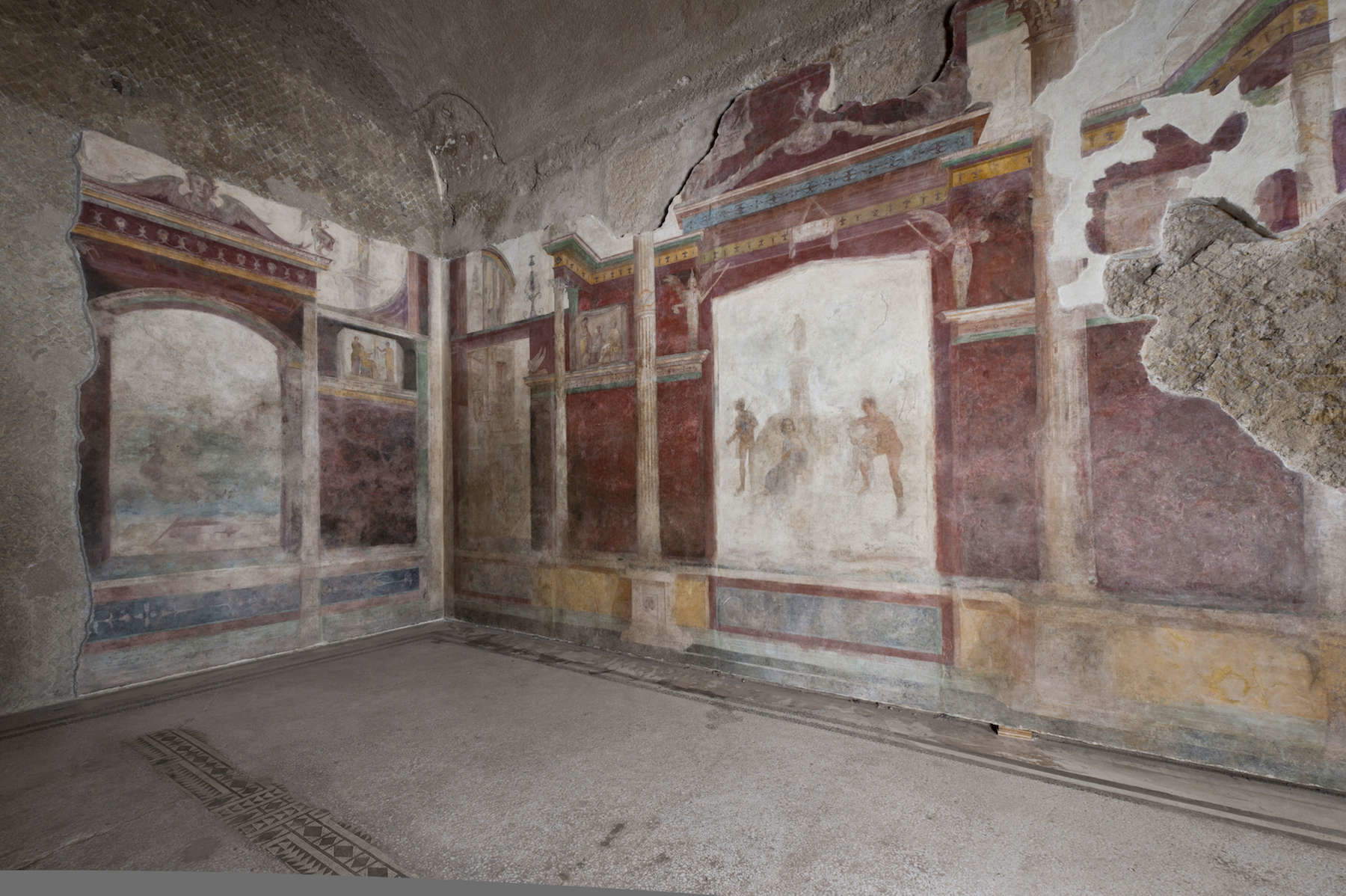Rome, after restoration, House of Livia on Palatine returns to view
As of Monday, July 22, 2024, the House of Livia on the Palatine reopened to the public after major restoration work. This historic first-century B.C.E. private domus, unearthed by nineteenth-century excavations, is attributed to Livia thanks to the discovery of a lead pipe engraved with the name Iulia Augusta, displayed in the tablinum (reception room). The mansion is considered part of the Augustan complex and reserved for Augustus’ wife.
The House of Livia consists of a quadrangular atrium, from which there is access to four rooms paved in mosaic and with frescoed walls, dating from around 30 BC. These frescoes are among the most important evidence of the Roman II Style in its most mature phase. In the center, at the far end of the atrium, is the tablinum, flanked symmetrically by two rooms (alae). To the right of the atrium is the triclinium (dining room).
Thanks to a multimedia intervention, visitors will be welcomed into semi-darkness, with the rooms illuminated in rotation to facilitate reading: from the atrium to the tablinum, ending with the triclinium. A narrative voice, combined with lightmapping, will reveal the mythological stories depicted and emphasize the pictorial patterns of the frescoes. This approach will provide the keys to appreciate the extraordinary beauty of the decorated walls and discover the iconographic program intended by Augustus.
The tablinum, also known as the “hall of Polyphemus,” features the Cyclops Polyphemus chasing the nymph Galatea on the back wall. On the right wall, Io is depicted facing Argos, the hundred-eyed giant who holds her captive, as Mercury arrives to free her.
In the right wing, the decoration is organized around a projecting portico, with columns interspersed with plant festoons adorned with bandages and objects of worship to Dionysus. Above, a rare monochrome landscape frieze on a yellow background presents scenes of real life and rituals from an Egyptian setting. The left wing depicts fantastic figures, such as griffins and winged Victories, positioned on the sides of candelabra and on the branches of the tree of life. The triclinium preserves an extraordinary pictorial decoration on a red cinnabar background, known as Pompeian red, with aedicules revealing sacred and rural landscapes, creating effects of spatial depth.
The House of Livia will be open to the public every day from 9:30 a.m. to 5:30 p.m., closing on Tuesdays. Access will be by ticket. For more information and to purchase tickets, you can visit the official website of the Colosseum Archaeological Park.







 |
| Rome, after restoration, House of Livia on Palatine returns to view |
Warning: the translation into English of the original Italian article was created using automatic tools. We undertake to review all articles, but we do not guarantee the total absence of inaccuracies in the translation due to the program. You can find the original by clicking on the ITA button. If you find any mistake,please contact us.




























